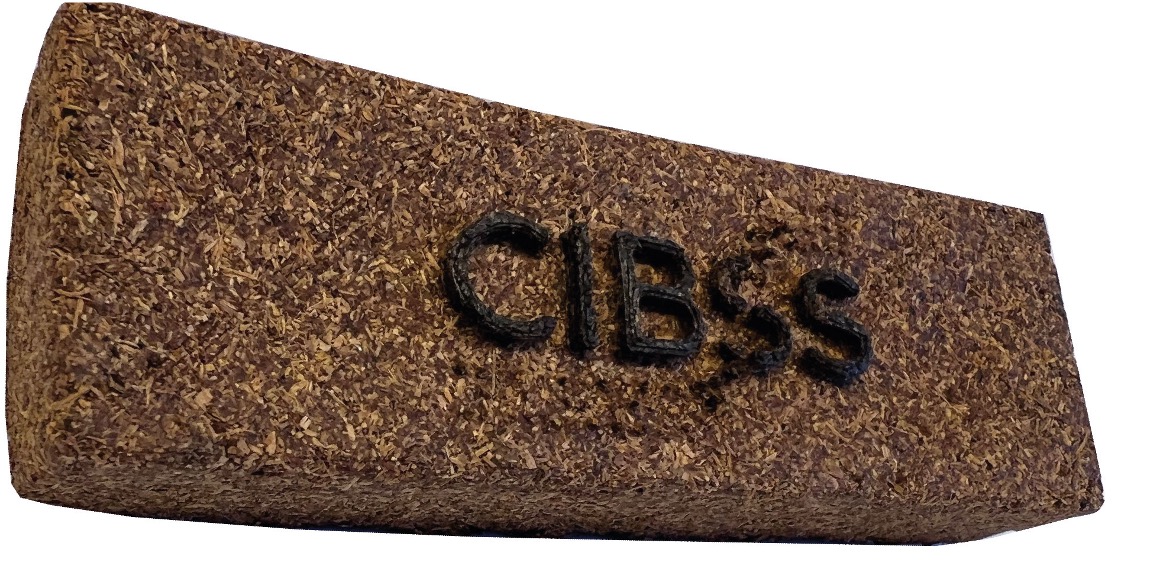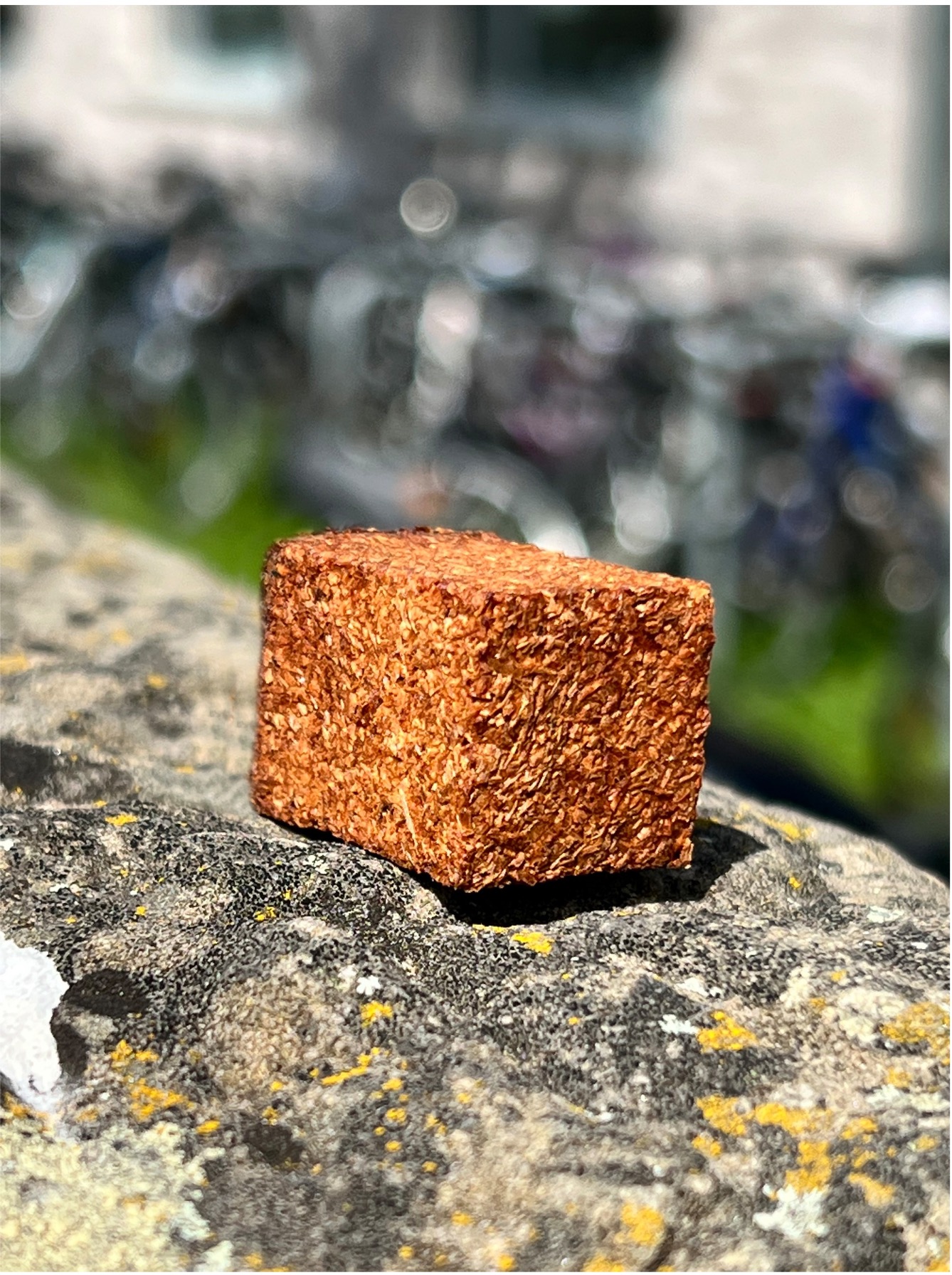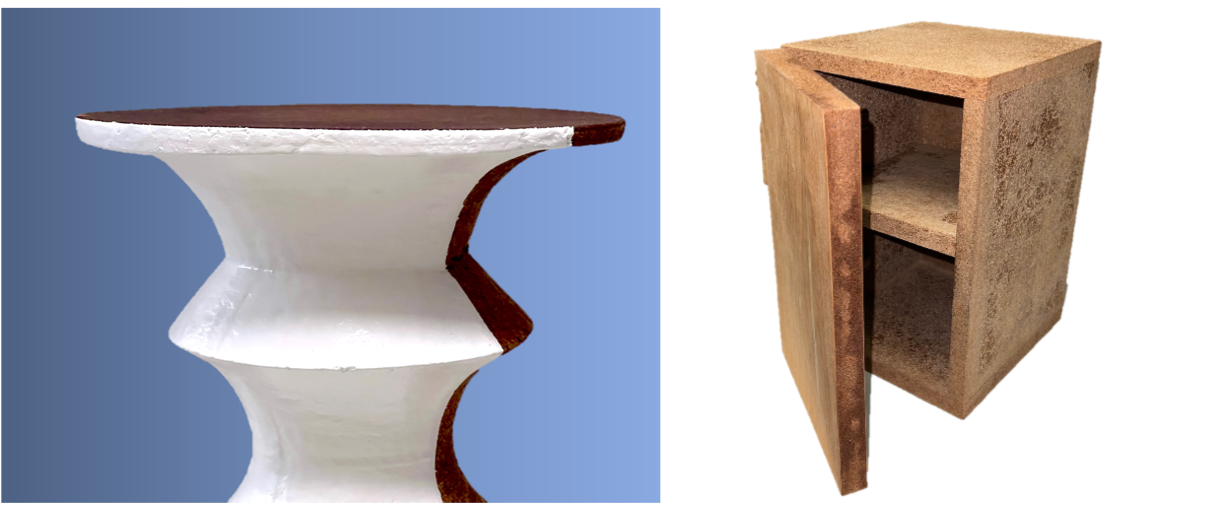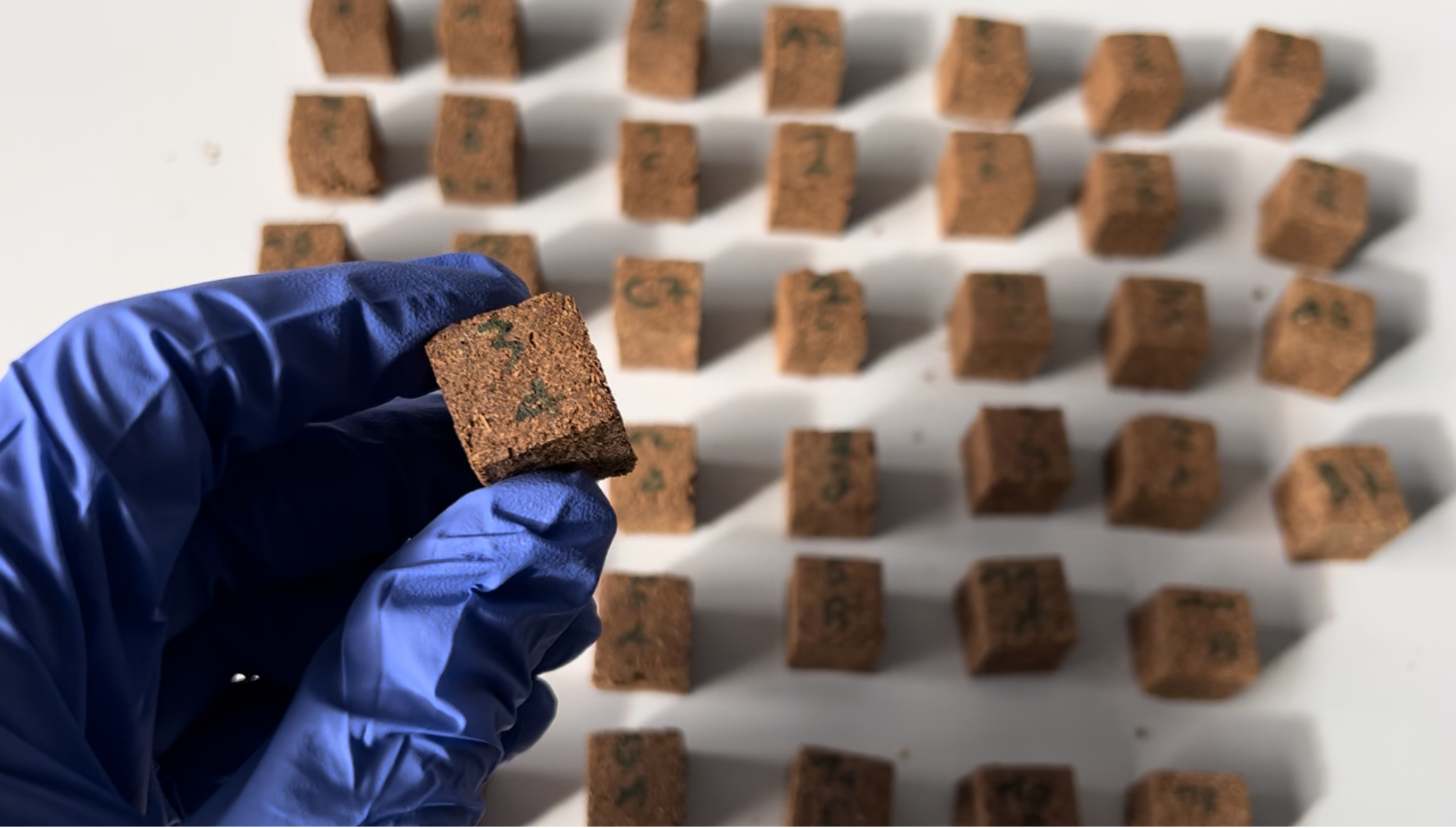Main navigation
Reinventing ‘wood’ with programmable bacteria
Wood is a renewable but nevertheless finite resource. What if it could be conserved by producing furniture and other objects from wood-based materials with the help of microorganisms? That is exactly what a team of researchers from the University of Freiburg and the Leibniz Institute for New Materials (INM) in Saarbrücken is working on in the DELIVER project. The aim is to create a database of hundreds of materials with a broad range of controllable properties for various applications that can be produced from wood waste.

What sounds like something out of a fantasy world actually works: preliminary research done at the CIBSS - Centre for Integrative Biological Signalling Studies cluster of excellence at the University of Freiburg has already shown that bacteria can be programmed to produce proteins that can in turn be used to produce wood-based materials from wood waste such as sawdust or agricultural residues. The researchers used synthetic biology approaches for this work. The resulting biocomposites are 100 percent natural in origin - i.e. sustainable and recyclable. They also contain biologically harmless degradable adhesives and are materials that can be produced in a controlled manner with the desired properties for various applications.
It has become obvious over recent years that this approach is not just some kind of biological gimmick, but will in fact play an important role in meeting growing demands for wood. Although wood is a renewable resource and forests account for a good third of Germany’s land area, wood resources are limited and forests are increasingly threatened by climate change.
That said, wood is considered one of the material systems of the future and is currently already one of the most used natural materials. Composites made from wood also constitute a significant proportion of the materials used in the construction and furniture sectors. More ecologically compatible alternatives to these conventional wood composites, which are equally multifunctional and robust with corresponding mechanical properties, would be very much welcome. Research into more sustainable options, such as fungus-based alternatives, has therefore been going on for quite some time. The slow growth rate of trees, along with the limited number of properties materials can be given, has so far hindered more sustainable production of wood-based materials.
Bacteria and wood waste become new materials for furniture and more

Prof. Dr. Wilfried Weber's Synthetic Biology group at the University of Freiburg’s Institute of Biology and at the CIBSS has been researching biomaterials for years, initially on hydrogels and nanomaterials for diagnostics. The group will be moving to the INM in Saarbrücken in summer 2023. "In this particular field, programmable organisms and optically controllable properties are already well established at the institute," says Dr. Manuel Finkbeiner, a postdoc in Weber's team. "So we came up with the idea of transferring this approach to building materials. We thought that combining synthetic biology and wood to develop a biological composite material was an intriguing approach.”
The researchers at the University of Freiburg then took the idea and launched a large-scale project aimed at developing new sustainable wood-based materials. The project, called DELIVER (Data-driven Engineering of Sustainable Living Materials), brings together numerous researchers from the CIBSS and livMatS (Living, Adaptive and Energy-autonomous Materials Systems) clusters of excellence. The ultimate goal is to create biocomposites whose properties can be significantly influenced by programmable microorganisms contained in the material. This approach not only contributes to conserving wood as a resource, but also protecting the environment: the new wood-based material is created through a biological process that uses bacterial proteins as an adhesive and is fully recyclable after use as the adhesives easily degrade in nature. Alternatively, the entire product can be thermally or biologically recycled. This is in complete contrast to many materials previously made of wood, which involve processing petrochemical-based adhesives that are then considered hazardous waste.
Using optogenetics to control material properties
Residual materials are used as a starting material for the innovative wood material. "We have already tested spruce wood chips as well as a mixture of beech and ash wood, which accumulate in sawmills, for example," says Rosanne Schmachtenberg, a doctoral student in Weber's research group. The chips are first separated in sieves to produce a reasonably homogeneous fraction. Living cells – e.g. Escherichia coli bacteria – are then added to the wood chips. The bacteria have been programmed to produce natural ‘glue’, which then crosslinks the wood fibres, resulting in a new material. "The material looks like wet sand," explains Johannes Falkenstein, a scientist on the team. "You can press this mixture into moulds of any size. The mixture is subsequently dried in an oven or drying cabinet, which causes the material to harden and kills the bacteria. The final material looks very similar to a press board."

Different types of material can be produced by applying optogenetics methods. The doctoral student explains: "We can use light of different wavelengths and photoreceptors to alter the gene activity of the microorganisms depending on the material properties we want to obtain. Another possibility is to expose different parts of the materials to light, resulting in zones with different properties. Anisotropic materials can thus be obtained. The illuminated part of the resulting material will then be more solid, and the non-illuminated parts more porous." The choice and combination of different experimental conditions can generate a vast range of different materials.
The process produces stable and very sustainable wood-based materials that are suitable for many different applications. The researchers have already been able to produce a number of prototypes of everyday objects, e.g. stools or cupboards. "We are currently testing moulds for larger boards and are also working with local carpenters to find out what else can be made from the boards," says Falkenstein.
Artificial intelligence keeps track – huge number of variations possible
Thanks to DELIVER, knowledge gained from the preliminary work will be used to test a variety of conditions, including bacterial growth and optogenetic control, as well as different species of microorganisms or wood waste. "We want to investigate different bacteria as well as yeasts to find out which of these microorganisms are best suited for the purpose," Finkbeiner says. "It might well turn out that a mixture of microorganisms is particularly productive. We are starting experiments to test different combinations and find out more."

The planned number of experiments and the associated possibilities, i.e. experimental conditions and the associated material properties, are enormous. Machine learning methods are being used to help the researchers keep track by predicting new material properties through models, documenting relationships between genetic programmes and material properties, and also to plan the experiments in a meaningful way. "We are aiming to create a material library with all possible combinations that we will then use to select the materials needed for a given application," says Finkbeiner. "This will help us to produce materials in a very targeted and precise way." The biocomposites will have a different range of properties, such as hardness, flexibility or even colour. "In theory, there are unlimited possibilities. We could even envisage fire-resistant materials or coatings."
The next research steps will involve logistical work. "In many ways, we are still at the beginning," says Finkbeiner. "We are now focusing on developing the necessary processes and procedures, in particular in cooperation with the other groups involved in DELIVER. Many questions still need to be answered: How can the materials be handed over to other groups? How can the results be communicated?" says Finkbeiner highlighting that the ultimate project goal is to have developed a concrete, practical material. "We will not be focusing on large-scale aspects, but instead on the basic features of the system. And we are of course in contact with the furniture and biotechnology sectors to find out which fields are the most suitable and what other applications might be feasible in the future."
Info box: Project DELIVER – Data-driven Engineering of Sustainable Living Materials
Project duration: January 2023 – December 2024
Participating working groups and institute directors:
- Prof. Dr. Wilfried Weber (coordination), formerly Synthetic Biology and the CIBSS cluster of excellence in Freiburg, now managing director at the INM Leibniz Institute for New Materials, Saarbrücken, and professor at Saarland University and visiting scientist at Freiburg University
- Prof. Dr. Thomas Speck, Institute of Biology II, Botany Research Group - Functional Morphology and Biomimetics at the University of Freiburg and livMatS cluster of excellence
- Dr. Clemens Kreutz, Methods of Systems Biomedicine (MSB) at the Institute of Medical Biometry and Statistics (IMBI) at the Freiburg University Medical Centre
- Dr. Tom Masselter, Institute of Biology II, Functional Morphology and Biomimetics research group at the University of Freiburg
Funded by the Carl Zeiss Foundation in the CZS Wildcard programme to encourage unconventional research projects by interdisciplinary groups.